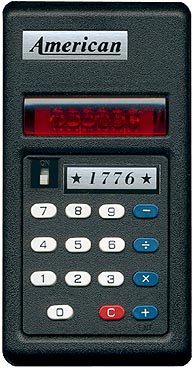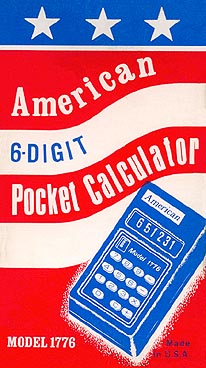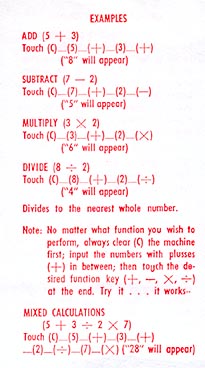
The American 1776 is a simple six-digit calculator from the mid-1970s. This calculator was marketed as being “Made in the USA”, with its patriotic name and branding. However, it was likely manufactured by Fantasia Calculator Corp. based in New Jersey.
In terms of design, the American 1776 has a compact but chunky brick-shaped body measuring about 65mm x 118mm x 23mm. It is constructed from cheap black plastic in a two-piece case. The case design is so basic that there is no battery compartment – you have to remove the rear section to access the battery. It runs on a single 9V battery and does not accept an AC adapter.

The calculator has a 6-digit red LED display, but no decimal point. The display uses bubble lenses to magnify the digits. There are tiny, short travel, squishy plastic keys reminiscent of those on early Commodore computers. The keys are surrounded by red and blue printed metallic stickers.

Functionality of the American 1776 is very limited. It can only perform the four basic arithmetic operations – addition, subtraction, multiplication and division – on positive whole numbers up to 6 digits. There is no support for decimals, percentages or memory. The logic follows reverse Polish notation, requiring the user to enter operands before selecting the operation.

Being a cheap 1970s calculator, the American 1776 suffers from overflow and divide by zero errors that lock up the device. It also exhibits a “negative zero” bug when subtracting numbers. The lack of decimal support severely limits the usefulness of the 6 digit display. Despite these flaws, the 1776 is still an interesting example of early handheld calculator technology before the market was dominated by brands like Texas Instruments, Canon and Sharp.